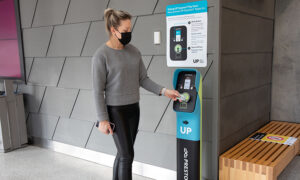
Future of Bridges | How National Highways is developing artificial intelligence for bridge management | New Civil Engineer
Inspections provide a snapshot of a bridge’s condition, but could artificial intelligence improve understanding of deterioration rates and hold the key to revolutionising inspection regimes?
National Highways has a moonshot ambition to manage key bridge structures without human intervention – and it hopes to get there using artificial intelligence (AI), academic research and, possibly, robot dogs.
At first glance, the ambition may sound far fetched, but England’s major roads operator recognises that getting to that point requires a real change in bridge condition knowledge. Gaining this insight is the driving force behind research currently being undertaken at the University of Nottingham and jointly funded by National Highways, WSP and the Engineering & Physical Sciences Research Council.
Making the right decisions
“Essentially managing bridges is about making the right decisions,” says WSP head of civil, bridge and ground engineering Steve Denton.
“It’s about selecting how and when to intervene so that safety is maintained and the best possible outcome is achieved.
“If a structure deteriorates too much, then less invasive, simpler repair techniques are no longer technically possible. But if you intervene too early, then it’s inefficient.
“So to make the decisions well, you need to understand not just the state of a structure at a point in time, but you want to understand how that condition is changing.
“Today our inspection processes are focused more towards a snapshot in time. I think there are really exciting possibilities from digital technologies that can help us understand how condition is changing.”
National Highways has a moonshot ambition to manage key bridge structures without human intervention – and it hopes to get there using artificial intelligence (AI), academic research and, possibly, robot dogs.
At first glance, the ambition may sound far fetched, but England’s major roads operator recognises that getting to that point requires a real change in bridge condition knowledge. Gaining this insight is the driving force behind research currently being undertaken at the University of Nottingham and jointly funded by National Highways, WSP and the Engineering & Physical Sciences Research Council.
Making the right decisions
“Essentially managing bridges is about making the right decisions,” says WSP head of civil, bridge and ground engineering Steve Denton.
“It’s about selecting how and when to intervene so that safety is maintained and the best possible outcome is achieved.
“If a structure deteriorates too much, then less invasive, simpler repair techniques are no longer technically possible. But if you intervene too early, then it’s inefficient.
“So to make the decisions well, you need to understand not just the state of a structure at a point in time, but you want to understand how that condition is changing.
“Today our inspection processes are focused more towards a snapshot in time. I think there are really exciting possibilities from digital technologies that can help us understand how condition is changing.”
www.newcivilengineer.com



